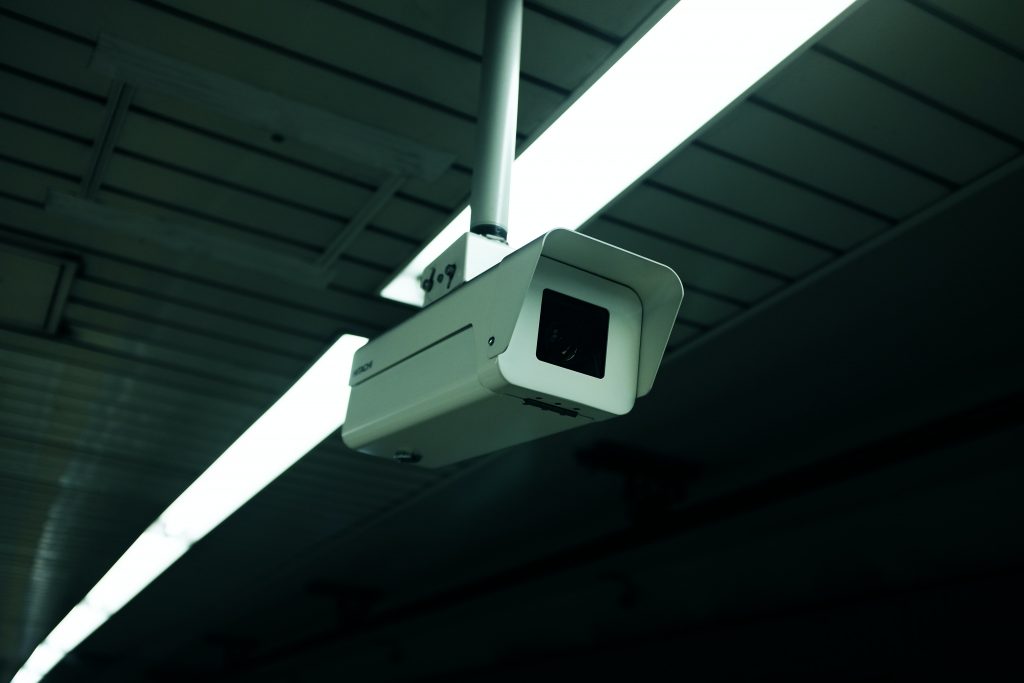2021 Industry-at-a-Glance: Trends to Watch For

The electronic security and life safety industry has forged through 2020, taking anxiety over the global pandemic and economic recovery and transforming it into a willingness to embrace changes in business processes and workflows to stay relevant and prosperous. Ongoing support from ESA and other partners, end user customers and peers continue to be the vital heartbeat, keeping our industry on a steady path forward.
As we move into the new year, ESA President, Jamie Vos, along with ESA’s volunteer leaders and strategic vendor partners express what they anticipate in the coming months of 2021.
Jumping into 2021
ESA President and owner of Security Solutions NW in WA talks about the industry post-2020, Amazon/Google’s reach, multifamily trends to watch for, consolidation and squeezing multiples
Speaking with Vos, we took a looked at the industry’s 2020 “mirror” together — and as we talk through its reflection, he offers commentary about the industry in 2021
“People will just be exhausted,” Vos says, anticipating how COVID will impact our overall industry during 2021. “People are sick and tired of working from home and looking at the walls all day. The best-case scenario, in my opinion, is status quo.” This means being content with the way things are at any given moment in our industry’s landscape and working within it to stay relevant, helpful and profitable.
While “status quo” may seem to harbor a negative connotation, it is quite the opposite because “physical security is always going to be a thing; we’re not going away; we just need to be prepared for what is to come,” says Vos.
Heading into 2021, technology will continue to displace market share for all traditional alarm dealers in residential and small-medium business (SMB), and major players are focusing in on our market.
“Ring, for example, has made a SMB product that is dynamic,” Vos explains. “It works very well; it’s very easy to install; and they have a professional dealer network out there installing it.”
Vos also mentions Amazon doing better with their dealer network.
“They’ve got a model right now that I think they can replicate, which is their Amazon access control, proving they want to capture the channel,” says Vos.
Additionally, I would be remiss not to mention Google investing 6 percent into ADT. Vos predicts this investment is for ADT Residential, which is an ADT SMB.
“So, what’s Google’s play here?” he asks, immediately answering, “Well, the reality is … they want to be in the market, and they want boots on the ground.” This should lead integrators to ask of their own businesses: 1) Do I care more about installs or do I care more about recurring? 2) Am I going to be able to get the same level of recurring? 3) What will this do to my multiples moving forward?
As these and other large companies start to figure out our market, they are going to get good at executing business here and that causes Vos to see pressure on the SMB market because technology has become very plug-and-play.
“New technologies are more plug-and-play, and less dependent on integrators, and that’s going to surprise a lot of people,” explains Vos. “You’re going to see other companies come into our industry and that’s going to raise eyebrows.”
For example, in the multifamily market, Latch came in from out of nowhere and is now being installed in complexes around the world. Very few industry professionals thought complexes would spend $2,000 per month on services to let residents into and out of their apartments. However, it‘s happened.
“We, as an industry, don’t typically embrace or even try to understand a new technology coming into our market and we get caught off guard as a result,” explains Vos. “We don’t capture it and instead, we let new players do it — and do it effectively.”
Industry players who understand this can prepare themselves.
“Be open minded; learn; and work with your sales force to revamp the sales culture to be more productive when it comes to conversations,” Vos advises. “Go into a sales meeting, listen and then, create a solution.”

Concerning commercial, Vos sees small camera and access control systems with low production dollars, as well as cloud-based services growing massively. He believes this will lead to problems in other areas.
“Whether or not there is an appetite to continue developing multi-family, for example, if the government chooses to just do rent forgiveness, this will squeeze development which is a lot of what’s driving the commercial integrator growth,” Vos explains.
He also predicts consolidation and thinks this will force people into a retirement situation – understanding that he believes multiples will be squeezed.
“It’s not going to be a catastrophic waterfall of attrition, but it will start to beat up multiples,” says Vos. “I think you’re going to see deals come down on multiples. So, where there was the 40 times before, I think you are going to start to see 35 down to 32 multiples. I don’t think we’re going to be in the 20s, so overall, will continue at pace.”
Based on this conversation, the overall business strategy for security pros should include:
- Preparing for what is to come.
- Embracing plug-and-play.
- Being open minded.
- Keeping your eyes open for new players into our industry.
- Revamping your sales culture to have productive conversations.
- Understanding that development is driving commercial.
- Watching for consolidations, mergers and acquisitions.
“For mid to small integrators, like myself, we need to focus on our core and do what we do really, really well heading into 2021,” Vos says.
Getting Real about Residential in 2021
Millennials Take the Lead in New Home Building, Smart Home Demand to Rise, and Pros Have Edge with Privacy Protection in 2021
The happenings of 2020 forced people to shelter-in-place, obey stay-at-home orders and even perform their regular work duties from home, inspiring creativity on the part of most who found solace in Zoom meetings, FaceTime and other technologies to stay connected to family, friends and co-workers in the comfort of their homes. While a vaccine for COVID has been approved and is being distributed, the outlook for 2021 — at least the first half — will be more time spent at home.
“A large swath of the America population is building and buying single family homes outside of core city centers for the first time in over 20 years,” Clint Choate, Sr. director – Security Market, SnapAV, explains. “Home builders are reporting record demand for new housing.”
Important to note and according to the National Association of REALTORS Research Group, in 2020, Millennials made up the largest share of home buyers. “This consumer group expects more technology for purposes of entertainment, safety and security, and other mission critical tasks, such as enabling the home office,” Choate says.
Continued use of installed technology and the purchase, installation and use of new or upgraded technology to stay connected, protected and safe within the home environment will stay on pace — and likely increase — in 2021.
“People are spending more time in their homes,” Alice DeBiasio, VP global product management, Security at Resideo, says. “People are investing in their homes more — from more technology and home automation adoption to home renovations.”
Therefore, we will see more “DIY” offerings — aka “plug-and-play” — introduced into the 2021 market to fulfill residential consumers’ wants and needs. This is not to discourage, but to inspire, as the typical electronic and life safety consumer places value on the professional approach. Even if a consumer chooses this type of technology, they will probably reach out to a professional for advice and installation.
“They [consumers] understand that, in the end, the results have a direct correlation to the investment,” Angela White, general manager at Central 1 Security, chair of ESA’s Executive Management Professionals and past ESA President says. ”That is not to demean the ‘DIY’er,’ but to recognize the value of the professional.”
Technologically, residential consumers are increasingly focused on safety, security and connection, which has increased the importance and power of video.

“People will continue to invest in video,” says DeBiasio. “In the smart home industry, demand for video today is what voice was five years ago. People are looking for that deeper level of connection and verification.”
Residential consumers crave information and data produced by their various connected devices, as it provides the verification and knowledge needed to make the proper decisions to live safer, more connected lives within and around their home. Integrators should focus on helping residential end users produce data by offering additional technologies that enhance video.
Steve Paley, president and CEO of Rapid Security Solutions, LLC and ESA Executive Board member suggests offering “surveillance and integrated analytics, in conjunction with remote monitoring via drones and other technologies to secure specific, vulnerable property areas.”
With connection being a huge goal of residential end users, clear, efficient and effective communication between people, technology and devices is necessary.
But, communication is changing. Using home alarm systems as an example, traditional phone lines for communications into and from homes will continue to be rapidly phased out.
“This brings the opportunity of using alternate forms for communications to monitor security systems, such as radio and cellular transmitters, and the challenge to verify alarm signals by contacting owners’ cell phones,” Tim Creenan, owner and CEO of Amherst Alarm, Inc. and Executive Board member explains. “Many times, because of telemarketers, people do not respond to Caller ID numbers they are not familiar with, so using text messaging will grow as a new method for this.”
Communicating with their smart home, residential end users rely on virtual assistants, like Alexa, as opposed to manual communication, to arm home alarm systems, open and close curtains, or set/alter thermostats.
“Virtual assistants are the norm and will continue to shift customers’ buying patterns as they connect to more and more smart devices throughout the home,” Ricky Sevta, chief revenue officer, simPRO, says. “This creates a growing but very competitive market to fulfill the demand for safety and security.”
And, as more and more devices are connected within the home, DeBiasio mentions that open ecosystems and interoperability will continue to be important, as well.
As a result, capturing the 2021 residential consumer will require offering consumer-appealing technologies and services, and incorporating a contract.
“For those who have a high margin of residential clients, understand that this consumer is purchasing on ‘I/we want this,’ so offer services that are sticky and ever evolving, the ones that the end user cannot imagine living without,” White says. “Maintain consistent contact with new offerings so they [consumers] do not look elsewhere for the latest and greatest widget — and make certain you have a solid contract that you are willing to enforce.”
Catching the eye of the residential consumer will also involve pros interacting and communicating differently with homeowners.
“It’s about engaging with the consumer on a different, deeper level,” DeBiasio says. “It’s about the care you demonstrate as you are in their home during a consultation and installation. It’s the support you offer if there is an issue, and it’s asking the consumer how they will be most comfortable interacting with you — whether it’s getting them familiar with products via video conferencing calls or in person.”
At the end of the day, it is the professionals residential end users will rely upon, for safety, security — and for privacy and data protection in 2021.
“Professionals have the strength, skill set and experience to fill a void in the marketplace to become the trusted advisor for homeowners looking to redefine what a safe, secure and fun establishment can be with the potential of today’s technology,” says Choate.
Comments on Commercial in 2021
Opportunities for Pro Remote Management and Smart Surveillance Tech on the Rise
As commercial will see more doors reopen this year — even if modified in terms of limited numbers of people inside spaces, the wearing of masks, moving to a hybrid physical-digital experience, etc. — courage is being restored as the world is learning how to safely function during a pandemic, with hopes of it ending soon.
“Restaurants have reduced hours and occupancy, and businesses have shifted presence more online,” explains DeBiasio explains. “I’m optimistic that this industry segment will see a rebound, and there will be progress during the back half of the year as consumer confidence strengthens.”
With increasing movement within commercial, integrators need to be prepared for a slow start in 2021, but realize, with a steady ramp up toward the end of 2021, businesses will be needing our industry more than ever.
“We see opportunities continuing as the commercial space consolidates to adjust for work-from-home,” says Dee Ann Harn, SHRM-SCP, CEO, RFI Enterprises and ESA Executive Committee Member, “Move, add, change work and tenant improvement (TI) projects will continue through 2021 and we anticipate seeing an increase in demand for integration of contactless controls, visitor management, camera analytics, etc.”
Integrators need to be educating commercial end users about technologies and solutions that are available to enable a safe return to work. Upgrades and installations should happen before the return to help reduce the spread of illnesses as well as set commercial end users up for success when employees do come back to work as their work environment will be ready to go.
“All things compliance driven will be the new norm and we will see benefits of strengthening internal process and procedures during Shelter-in-Place (SIP) to begin to pay off in 2021,” says Harn.
Commercial end user’s purchasing habits tend to be based more on need than want. “They identify a problem — whether internal or external — and our focus [as integrators] needs to remain on educating about solutions we offer to mitigate their concerns,” says White. Therefore, information provided needs to have security at its foundation.
Reflecting on 2020 and the shutdowns, all interviewed agree that offering remote services and remote management options — including monitoring and app access — is a strategy to deploy.
“I believe that the commercial consumer will continue to be a large portion of business in 2021, especially with remote offerings,” says White. “The ability to view and control an environment from anywhere proved to be invaluable during the 2020 shutdowns.”
Access control and CCTV projects will also continue to grow in commercial, according to Creenan, which will foster the need for professional remote management of these services, while Sevta mentions connectivity in the workplace will be expected.
Access control and CCTV projects will also continue to grow.
“Virtual assistants and connected devices are creating smart surveillance solutions, acting as receptionists and security teams, connecting door locks, access control, CCTV, cameras, lights, etc.,” explains Sevta. This plays into what Creenan refers to as “a new shift in how companies use traditional office space” as “work continues to be done remotely.”
Commercial pros need to realize that IoT will play a large part in helping to achieve successful, effective remote monitoring, therefore, will become a larger revenue source for our industry. That being said, cybersecurity becomes prominent and Harn points out that cyber concerns will move to the forefront for the customer and integrator.
For Vos, his biggest concern with cyber threats is one of his peers leaving a customer exposed. “That company will be drug into the spotlight because I predict it will be a very large company that will be exposed,” he explains.
In addition to cybersecurity offerings, other verticals within commercial will stay strong, as well.
“Healthcare, agriculture, distribution, data center and other infrastructure industries will be going strong,” Harn says, naming a few.
However, the elephant in the room in commercial remains into 2021, as most seasoned pros know, which is attracting, recruiting and retaining skilled talent within our industry. ESA in partnership with SIA has taken a huge step in battling this by launching FAST — a non-profit organization designed to promote careers in the physical security technology and life safety industry by connecting passionate, innovative professionals with new industry opportunities.
“We need to get into thinking about how we can attract people and retain them,” Vos says. “We need to be competitive, and in order to do that, we have to see wage escalation, so we have to see competitive rates.”
As a COVID vaccine becomes more readily available to the masses, Harn believes opportunities for recruitment will become richer.
“Companies who were able to hold onto their employees and maintain a strong culture during the height of the pandemic will not be able to rest on their laurels,” she explains, adding that as the country goes back to normal, competition for skilled talent will being to pick up.
In general, and for the start of 2021, commercial pros, need to focus on what businesses will require: “a flexible, affordable and open platform that address their needs for security and safety,” DiBiasio recommends.
Focus on Fire in 2021
Fire a Consistent Source of Revenue, Consumer Education a Must and 3G Sunset Imminent
COVID was the catalyst that caused a slowdown of the fire market, however, toward the end of 2020, the market began to bounce back. Throughout 2021, the fire market is expected to keep improving and realize improved stability.
“The industry has adapted well in the face of the changes that 2020 brought, and with the political climate stabilizing and progress being made toward normalization, we could expect an increase in business openings and new constructions toward the second half of the year,” Daniel Rosales, senior director of technical services, Telguard, says.
Commercial consumers have limited choice as to whether they should purchase fire safety or not since this portion of the industry is regulated by codes, standards and the authorities having jurisdiction.
“There is little left to interpretation; this is a ‘must-purchase,’” White says, noting that fire will remain the most consistent source of revenue with must-install, must-inspect.
Because fire is considered a ‘must,’ Harn says that inspections and upgrades are a huge opportunity. Additionally, “fire is going to continue to be in play for consolidation of commercial space and the increase of TI work as the design of office space changes to accommodate social distancing and safety protocols,” she highlights.
Consumer fire education — both residential and commercial — is also a large opportunity for fire professionals in 2021.
“This topic becomes more important as people spend more time in their homes: cooking, using space heaters, using candles to help build ambience,” says DeBiasio, focusing on residential.
As the fire education process continues into 2021, Creenan predicts that because code enforcement officials are becoming more educated about proper application and requirements of fire alarm systems, the cost of the average system and inspection rates will increase in addition to “continued conversion from traditional phones for monitoring fire alarm systems to approved radios/cellular units.”
Concerning fire-related technology and communications, 3G cellular technology sunsets are in 2022 and we should see increased effort from the industry in upgrading devices.
“Considering this is the third sunset that the industry will be going through gives me hope that this will be a gradual process,” Rosales explains, “however, if I were a betting man, I would say that we will see the biggest movement toward the second half of the year.”
Overall, 5G, IoT and the continual evolution of hyper-connected smart devices will bring the biggest changes to the fire industry in 2021, but with changes comes opportunities.
“Fire has been and will continue to be a staple of our profession,” says White. “The ‘tug at your heartstrings’ is that we can save lives … that is impactful! Fire is not something that professionals dabble in; you need to be fully committed and remain fully committed to this sector of the industry.”
Coming out of 2020 and entering a whole new year and space, commitment to the industry, yourself and your business, and to resilience and partnership as well as focusing on these trends and key takeaways as steppingstones into 2021 will propel our industry to newer and greater heights.




